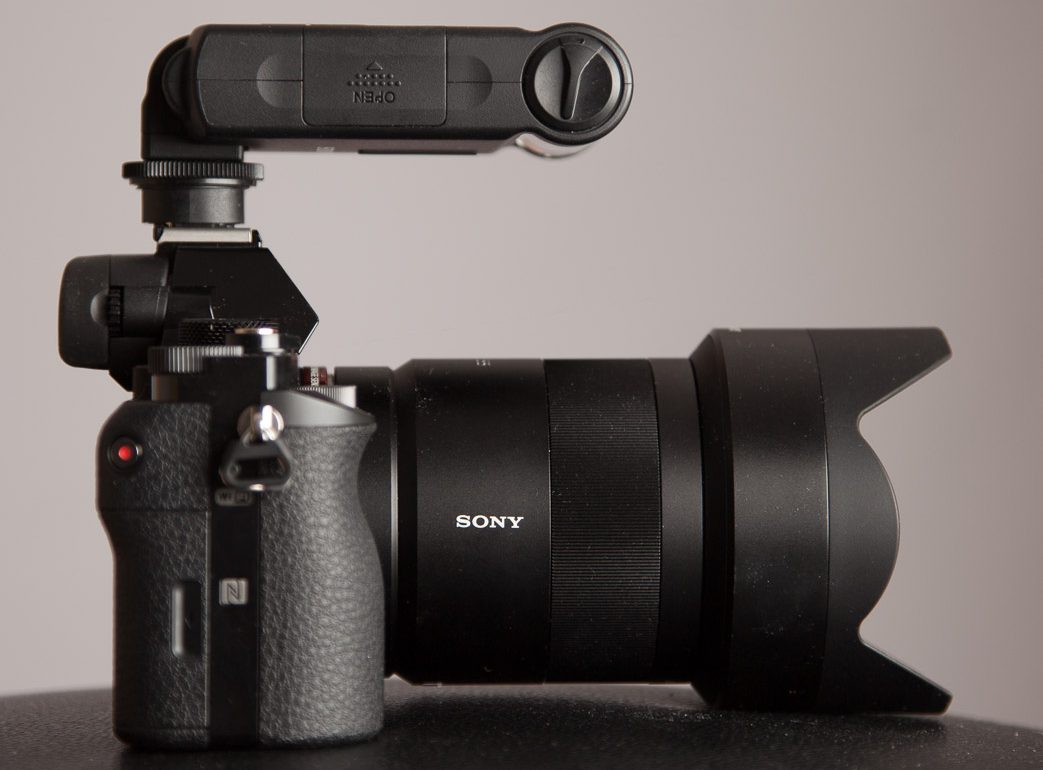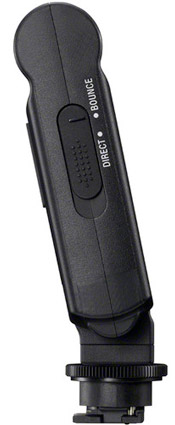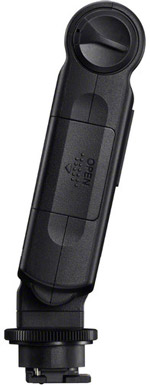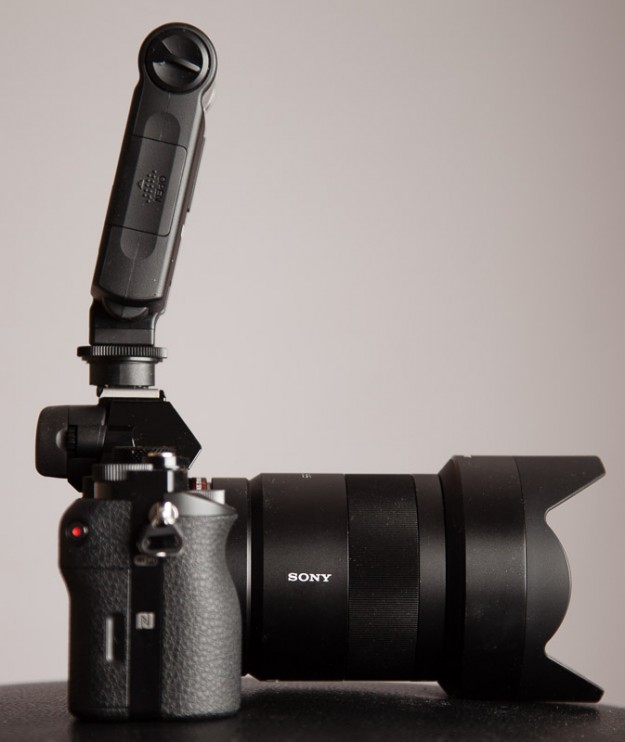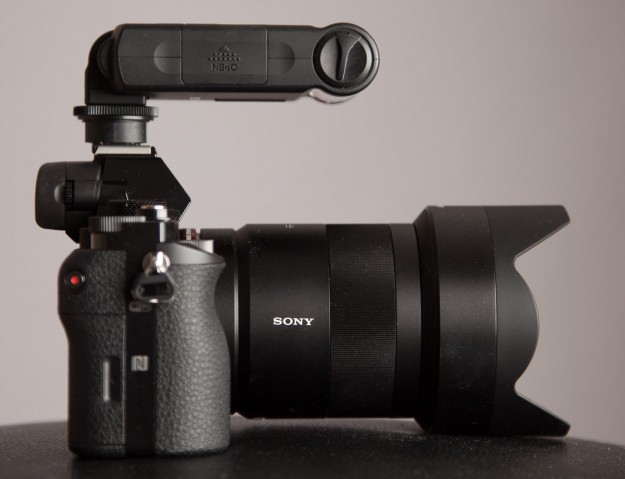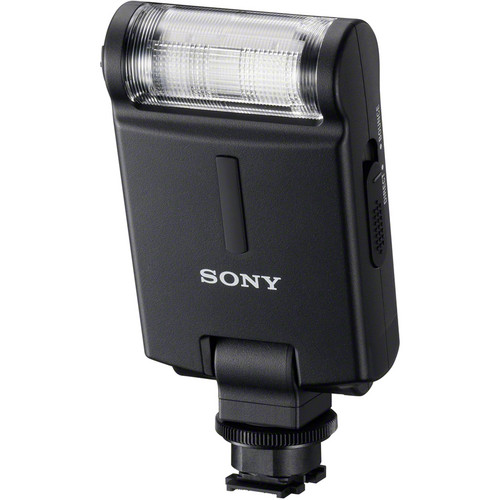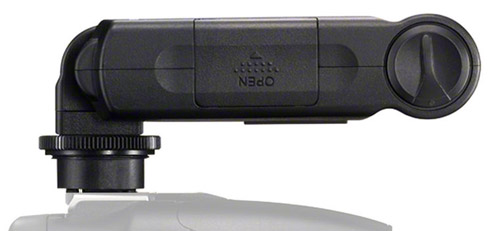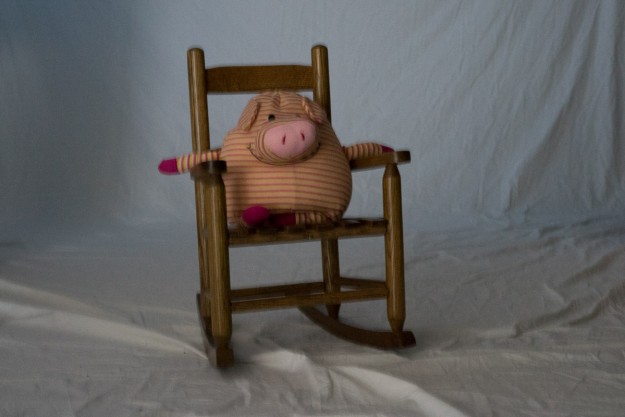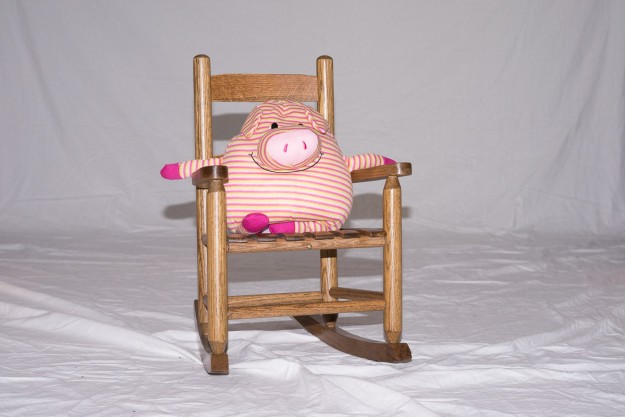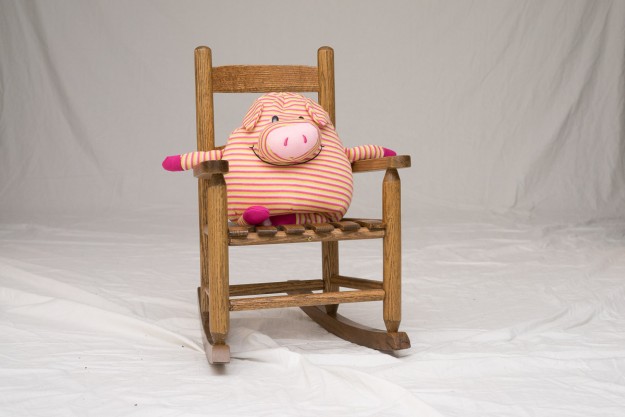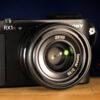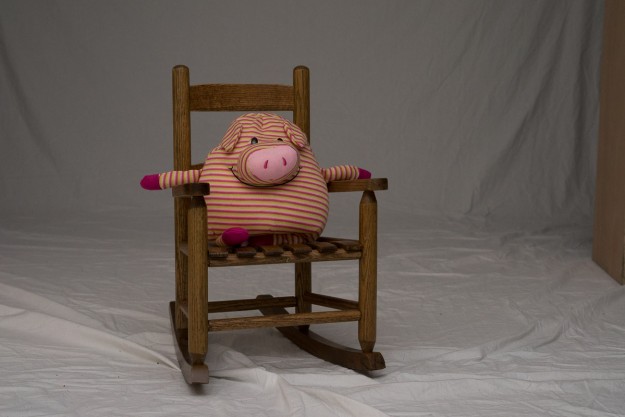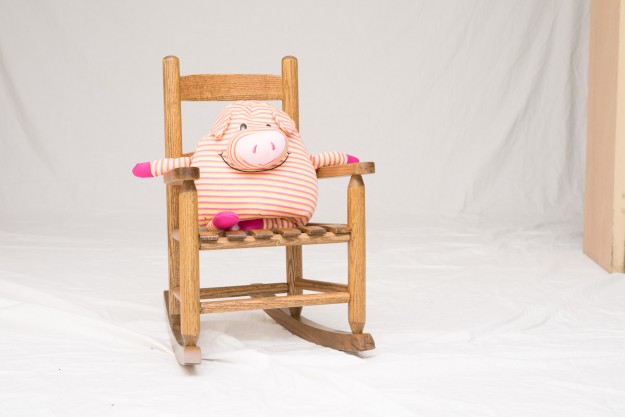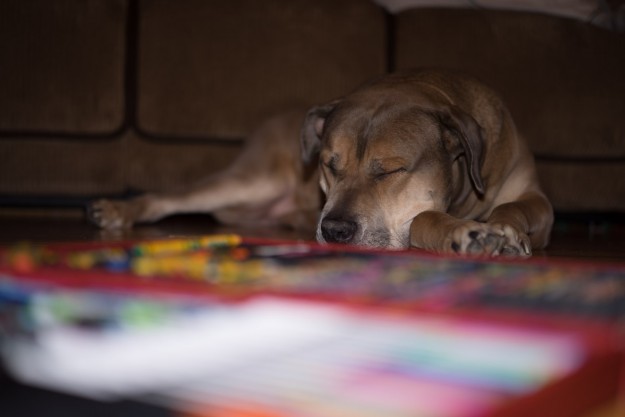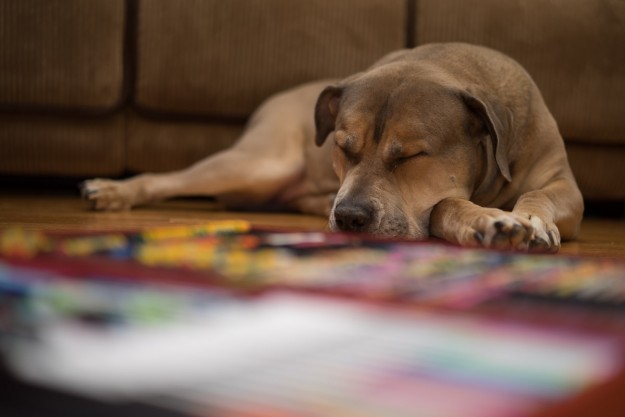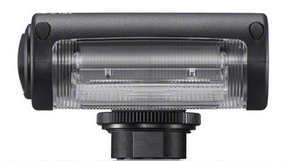In this article I am going to go over the Sony HVL-F20M Accessory Flash unit by showing you some test shots using various flash settings and camera settings. I hope to illustrate what this flash is capable of in the real world, and how best to use it based on your needs.
The Sony HVL-F20M is the most affordable accessory flash unit that you can get for your Sony cameras that have the newer Multi-Purpose Hot Shoe. Hence, the M in the model number.
The Sony HVL-F20M flash goes for ~$148 US, and is a fair value considering the power, size, and overall results. It takes two AAA batteries and gets enough flashes to cover you for approximately 90 fires. I took about fifty shots with the flash the first few days of testing and it still charges up quick like I just put the batteries in. The recycle time is not bad either considering how small it is. I was able to fire several shots in a row with the flash with no waiting in between. After about four shots and having pretty low batteries, the flash charging light flashed and the A7r took the shot without the flash firing.
The next shot the flash fired again. This does happen when you fire fast and the flash can’t re-charge fast enough, but if you wait a few seconds it’s ready to go. The more expensive flash units can fire faster for longer periods of time due to the recycle time and additional battery power required. Those units like the HVL-F60 for example, are much larger and more expensive though.
After another day of testing the the HVL-F20M, the batteries are now close to dead. I was very close to the 90 flashes per the specs so you know. It still works, but the flash takes several seconds to charge now, which is totally normal. Only using two AAA batteries, that is not bad at all in my opinion.
The Sony HVL-F20M folds down when not in use and powers off at the same time which is convenient and makes logical sense.
Direct Mode VS Bounce Mode?
The HVL-F20M has a direct mode and bounce mode that can be changed with a sliding switch on the side of the unit. The flash head rotates inside as you slide the switch from one position to another. Direct mode aims the flash towards your subject in the same direction as your lens. Bounce mode aims the flash upward at a 75° angle. You might wonder why you would ever want to aim the flash up, but once you try it and see the results you will totally understand the advantage. Basically the small flash unit fires the light upward and it hits the large ceiling. This diffuses the flash and then the ceiling actually reflects the light back down and illuminates your subject. This “bounce” method has been around forever, but is technically a more advanced use of the flash if you have never used one before. I honestly had no idea a flash could be bounced when I started with photography, so don’t feel bad if you didn’t know.
The bottom line is bounce is much better than direct if you have a ceiling above you that is usable. Direct mode also works, but produces a much more harsh result as you will see below. If the ceiling is really high you will need to crank the power of the flash up significantly. This is normal and takes some practice to get used to. If the ceiling is not white, your flash color will have a cast of whatever the ceiling is. This may add a weird color, or it may add some warmth to the image depending on the ceiling. Usually it’s not that bad from my experience.
I remember when I was shooting a wedding back in the day and the place had a green ceiling. I was honestly not sure what would happen, and as it turns out nothing noticeable. The ceiling really did not affect the image enough for me to notice in Lightroom at the time. I have heard of this being an issue though. What I learned was the ceiling color did not seem to matter as much as I thought. The ceiling height does make a huge difference though. Inside a church for example, the ceilings are often very high! I was not sure whether to bounce the flash or fire direct in this situation. So I took a few test shots. Turns out the flash did not work in bounce mode very good, so I put my diffuser top on, and used my flash in direct mode instead. I prefer to use no flash when possible, but sometimes you have no choice. People coming down the aisle you have to use the flash to freeze the action. The light is to low for people walking and no flash. Again, practice, test shots, and checking the results on the camera was the trick. No magic or anything.
Another issue I ran into when learning about the flash was it not being powerful enough in really dark conditions and I had no idea why. Turns out I had to raise the ISO on the camera. The flash power can be amplified by raising the ISO or opening up the lens aperture. Shutter speed has no effect on flash at all. The shutter speed controls the ambient light captured by the camera and the aperture/ISO sort of limit the flash. For example, at ISO 100 the flash will only work with X amount of power, but when you raise it to ISO 200, it effectively doubles the flash power by making the sensor more sensitive to the light the flash puts out. Huh? The sensor sensitivity increases when you raise the ISO, therefore making it “easier” to see the actual flash.
So why am I telling you all this extra info? I don’t want you to get frustrated when your results might not be so good. It takes a little practice to get consistent good exposure’s from a flash when using it in a variety of conditions. If you use the flash in the same type of situation every time, you will get the hang of it really quick!
HVL-F20M Additional Photos
Mounted to the Sony A7r
Here is what she looks like in the closed position which is also Off.
Note the turn dial on the top of the flash on the right side. That is to rotate away the extra built in diffuser to allow for a more telephoto effective flash. It’s not going to be pretty like bouncing, but it may get you a shot sharp that you would have otherwise gotten blurry. I tried fooling around with it inside, and it made the flash look even more harsh in direct mode, and slightly brighter in bounce mode. A cool feature, but unfortunately I really didn’t get to test the effectiveness of the actual telephoto range abilities. The flash also has a tightening ring on the bottom to lock it on the camera secure.
The Sony HVL-F20M External Flash is an on-camera flash that supports the use of the Sony Alpha TTL system and is compatible with Sony’s Multi Interface shoe. When compared to the built-in pop-up flash of many cameras, this flash helps to extend the effective flash working distance by providing a guide number of 65.6′ / 20m at ISO 100.
For controlling the flash exposure the Advanced Distance Integration (ADI) flash metering system works in collaboration with Alpha cameras and lenses that feature an integrated distance encoder to intelligently produce balanced results. By accounting for the subject-to-camera distance, as well as ambient light and subject reflectivity, the ADI system works to control the flash output in order to provide precise, consistent flash exposures.
A built-in diffuser helps to control the spread of the flash; when enabled the spread is wider to suit working with wide-angle lenses, and when disabled the flash beam is narrower and longer to benefit working with telephoto lenses. Additionally, the head can tilt between 0-75° for bounce applications and greater control over the direction of the flash.
- The HVL-F20M provides a guide no. of 65.6′ / 20m (ISO 100), which effectively extends the flash range beyond that of a built-in pop-up flash.
- The Multi Interface shoe connection enables expanded compatibility with Sony Alpha cameras in addition to other cameras featuring a traditional hot shoe.
- Accurate TTL flash metering is possible when used with compatible Alpha cameras and lenses that incorporate a distance encoder. The Advanced Distance Integration (ADI) flash metering system works to produce both exposure and white balance compensation regardless of background conditions. By measuring the subject to camera distance, ambient lighting, and pre-flash reflectivity of the subject, the ADI system intelligently calculates an effective guide number in order to control TTL metering.
- The flash head is able to bounce upward to +75° in order to provide greater control over the direction and spread of the flash output.
- A built-in diffuser helps to spread the light out over a wider range to better suit shooting with wide-angle lenses. Additionally, a tele setting enables a longer flash throw with a narrower beam in order to benefit working with longer, telephoto lenses.
- Intuitive use is afforded through the automatic on/off function by simply raising the flash into shooting position. An easily accessible switch on the side of the flash permits quick switching between direct and bounce flash modes, and a charging lamp indicates when the flash is ready for use. The flash utilizes two AAA batteries as its power source and provides over 90 flashes when using new alkaline batteries.
How to use the HVL-F20M
So how do I recommend you use this unit? Well, the easiest way to use it and get great results is to use bounce mode with Auto ISO and the lens wide open. For example when I was using the A7r and 55mm f/1.8 Ziess lens, I had the lens @ f/1.8 and Auto ISO. It did a good job about 90% of the time I would say. When I moved more than 10 feet away I had to raise the flash exposure compensation power though. I had to actually lower the flash compensation power when I was really close to Layla as well. Again, it depends on a lot of variables and flash does a great job figuring it out most times. If it messes up, you can make adjustments to help.
If you want a more consistent result, try setting the ISO to a fixed value like 200 or 400. This will take a variable away from the camera and should provide a more consistent flash exposure. You have to also be consistent though with your distance. If the distance changes, you will have to adjust accordingly. If the light changes drastically you might have to change the settings again. Lights out for the candles at B-Day time comes to mind. I often see people panic with their camera when the lights go out 😉 Don’t panic, just take a a few test shots at home first and then you will know exactly how the flash and camera need to be set for the best exposure possible. I’ve done this many times in the past, and it’s nothing to be afraid of. Flash is scary though for some reason, and I think it’s because it generally ruins shots most of the time. That is the on camera flash though, and it’s firing directly at your subject. When you bounce the results are almost magical in comparison.
Lets get to some testing and I will show you exactly how I had the camera set for each shot.
HVL-F20M Flash Testing with Sony A7r
I needed to take a shot with no flash first, so you can see what the camera did on its own in the dark conditions.
It was really dark so the camera went for the highest ISO setting Auto ISO allows which is ISO 6400. The resulting shutter speed was then only 1/10sec when using an aperture of f/5.6.
It’s blurry, because I can’t hand-hold at 1/10sec with that lens, and the lighting looks awful.
Now look at what the camera and flash decided to do when using Direct Mode. The camera chose ISO 1600 and whatever power the flash itself used.
Pretty nasty shadows in the background and a flat harshly lit pig. It’s better than the blurry shot though 😉
Now take a look at what the Bounce Mode does in the same exact situation. The ceiling is only about 7 feet in the studio, but the pig was close to the floor, so the flash had to travel a long way up and back down for the shot below.
Pretty amazing right? I thought it was the first time I saw it years ago 😉 Anyway, no harsh shadows behind the subject and why is that exactly? Well, remember the light is bouncing off the ceiling and then coming back down all diffused. The ceiling acts like a huge reflector, therefore a huge light source that leaves no shadows. The small light source from the flash unit leaves nasty shadows in comparison and it’s really easy to see. Just like the sun pretty much.
So now what happens if you raise and lower the exposure comp? Well, Exactly what you would expect:
Less power -2 flash Exposure Compensation
More Power +2 Flash Exposure Compensation
As you can see the HVL-F20M works really well and is pretty easy to use in a basic situation like this.
How About a Human?
I kindly asked my trusty model Layla if she wanted to help me for a few minutes and of course she did 🙂 Surprisingly, no shadows this time using direct mode but if you’re at the perfect distance they aren’t visible to the camera. They are there, just behind Layla where we can’t see.
And Bounce mode which looks much more natural and flattering to the model. Notice how much more depth the face has with the bounce vs the direct. The direct mode shot makes her face look flat like a piece of paper.
How About a Dog?
So Chubs was laying on the floor like the lazy beast he is, and I took advantage of the situation! Check out the Direct Mode VS Bounce Mode again. In this case direct mode was not powerful enough, and the huge white area in the foreground is most likely the cause of that. I could have tried again at +1 flash exposure comp, but switched to bounce mode instead.
Ah, much better! Still a little under exposed, but not near as bad as direct mode. I could easily raise the flash exposure comp to get this scene perfect, but I think you get the idea at this point.
Closing Remarks
Clearly bounce mode is the way to go when using the HVL-F20M Flash if possible. Direct mode works, but as discussed and clearly illustrated above, it sucks and is harsh compared to bounce mode. So what do you do if there is no ceiling? Use direct mode and deal with the results. Remember, with no flash the shot would be blurry or super high ISO, so anything is better than nothing. Direct mode, or on camera flash, is slightly better than nothing if you ask me. It’s not flattering at all and tends to make people look scary or just bad in general. Bounce that flash and you will love the results in comparison!
You want even better results? Well then off camera flash is the next thing you need to look into 😉 It’s the best way to get professional looking results for sure, but is the most complicated and hard to learn. It’s really not that hard though and I will gladly show you guys how to do it if you want. There are so many tutorials on the web for this type of stuff though, so it’s hard to justify the time unless you guys specifically want me to do it.
I actually put together another flash tutorial a while back called Sony Nex-6 and Flash Photography ON and OFF Camera. It’s pretty thorough and explains a lot about off camera flash and using the regular Nex-6 built in flash.
Thanks again for checking out SonyAlphaLab.com and please feel free to ask questions or comment below. I always enjoy reading and responding to your commentary and questions 😉
Jay
Sony HVL-F20M Flash – $148 US @ BHPhotoVideo (Click Here)
Sony A7r @ BHPhotovideo | Amazon | Adorama

